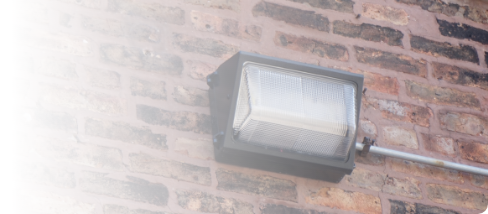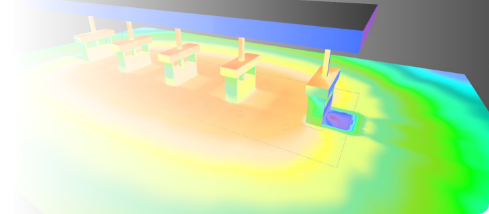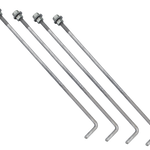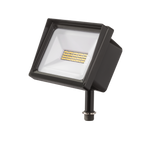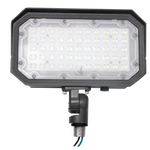You have no items in your shopping cart.
This guide will provide you with a comprehensive understanding of LED lighting technology, its advantages, and its various applications.
Get ready to level up your expertise and illuminate the world with efficient and sustainable lighting solutions!
A Brief and Luminous History of LED Lighting
Gather 'round, folks! We're going to take a trip back in time to explore the fascinating history of LED lighting. Did you know the tale of LED technology began in 1907 when British scientist H.J. Round stumbled upon electroluminescence? That's right, even before sliced bread was invented in 1928, we had a glimmer of hope for better lighting!
Fast-forward to 1962 when a bright guy named Nick Holonyak Jr., an engineer at General Electric, invented the first practical visible-spectrum LED.
Fun fact: the first LEDs were only available in red, but they were still quite the showstoppers. It's like they were saying, "You know what's better than sliced bread? A red LED!"
Over the years, the tech evolved to include green, yellow, and finally blue LEDs. But the real game-changer was when Shuji Nakamura, a Japanese researcher, introduced the blue and white LEDs in the 1990s. The invention of the white LED lit up our world like never before, and LED lighting became the superstar of the lighting industry.
LED Lighting Adoption and Market Growth: Cha-Ching!
In the past two decades, LED lighting has grown from being an underdog to becoming the heavyweight champion of the lighting world. The rising focus on energy efficiency, environmental concerns, and strict energy regulations all contributed to the LED's meteoric rise. It's like we woke up one day and decided, "Let there be LED light, and let it be everywhere!"
Market research shows that the global LED lighting market is projected to reach a dazzling valuation of over $168 billion by 2030. Now that's a lot of light bulbs! With a compound annual growth rate of around 13%, it's safe to say that LED technology is truly shining bright like a diamond.
Governments worldwide have been instrumental in lighting up the path for LED technology. They've rolled out energy policies, regulations, and incentives faster than you can say, "Hey, that LED bulb is brighter than my future!" These actions have encouraged the use of energy efficient lighting solutions and given LED lighting the green light, quite literally.
For instance, the United States Department of Energy (DOE) has introduced various programs like ENERGY STAR certification and the DesignLights Consortium (DLC) to promote LED technology. These initiatives have helped consumers identify energy-efficient products, and they've given manufacturers the motivation to develop and market top-notch LED lights.
In conclusion, the rise of LED lighting technology is a thrilling story of innovation, determination, and a dash of humor. As an electrician, understanding the history and growth of LED technology will help you appreciate its importance and stay current with the latest trends in the industry.
So, let's get ready to bask in the warm, energy-efficient glow of LED lighting and share a chuckle as we illuminate the world together. Just remember, when it comes to LED lights, the future's so bright, you might need shades!
How LED Lights Work - The Science Behind the Glow (No Lab Coats Required!)
In this section, we'll take you on a wild ride through the science of LED lights. Let's dive into the world of electrons, semiconductors, and photons, and learn how these tiny components come together to create a brilliant glow. You might even say it's a light-hearted journey (pun intended)!
First things first, what does LED stand for?
LED is an acronym for Light Emitting Diode. A diode is a simple electronic component that allows current to flow in one direction. It's like a one-way street for electrons, and if you've ever driven in the city, you know how important those can be!
Now, let's get to know the key players in our story: electrons. Electrons are subatomic particles that carry a negative charge. You could say they're the "negative Nellies" of the atomic world, but we won't hold that against them. When these tiny particles are on the move, they create an electric current.
LEDs are made from semiconductor materials, which are kind of like the bouncers at the electron club. They control who goes in and who stays out. In this case, they control the flow of electrons, making them essential for the functioning of LED lights.
But how does a moving electron create light? Well, strap in for a wild ride through the quantum world. When an electron moves from a high-energy state to a low energy state, it releases a tiny packet of energy called a photon. These photons are the party animals of the light world, bringing the glow wherever they go.
Now, you might be wondering why LEDs don't get hot like traditional incandescent bulbs. Well, that's because incandescent bulbs are like a very inefficient gym workout, where most of the energy is spent on heat instead of actual exercise. On the other hand, LEDs are more like a well-planned workout routine – they put most of their energy into creating light instead of heat.
Speaking of heat, did you know that LEDs can work in extreme temperatures? They're like the Chuck Norris of lighting technology, handling the heat and the cold without breaking a sweat (or a filament, in this case).
In conclusion, the science behind LED lights is a fascinating blend of physics, chemistry, and a little bit of humor. By understanding the way electrons, semiconductors, and photons work together, we can appreciate the brilliance of LED technology even more. So next time you flick a switch and see that familiar glow, remember the tiny components working tirelessly to light up your world.
Fun Fact: LED lights are highly efficient and can convert up to 90% of their energy into light, compared to only 20% for incandescent bulbs.
Advantages of LED Lighting
In this exciting section, we'll embark on a journey to discover the incredible advantages of LED lighting. We'll uncover the reasons why LED lights are considered the future of illumination. So, grab your metaphorical safari hats and let's delve into the world of LEDs!
Advantage 1: Energy Efficiency and Longevity
LED lights are like the marathon runners of the lighting world. They have incredible stamina and can last up to 50,000 hours or more! That's up to 50 times longer than traditional incandescent bulbs. These energy-efficient wonders use only a fraction of the power needed by their older counterparts, resulting in significant energy savings and reduced greenhouse gas emissions.
Advantage 2: The Wildlife Champion
As we mentioned earlier, LED lights are a more environmentally friendly option for our planet's wildlife. By minimizing light pollution and reducing the impact on nocturnal creatures, LEDs help maintain the delicate balance of ecosystems. So, not only do LED lights save energy, but they also protect our planet's precious inhabitants.
Advantage 3: The Colorful Spectrum
Who doesn't love a splash of color? LEDs offer an impressive range of hues, making them the artists of the lighting world. From vibrant reds to soothing blues, LEDs can easily be customized to set the perfect ambiance or create eye-catching displays. Say goodbye to boring, monochromatic lighting!
Advantage 4: Versatility and Design Flexibility
LEDs are like the Swiss Army knives of illumination. They come in various shapes, sizes, and styles, making them perfect for a multitude of applications. From tiny indicator lights to massive billboards, the versatile nature of LEDs allows designers and engineers to think outside the box and create innovative, practical solutions.
Advantage 5: Safety First
When it comes to safety, LEDs are a shining example (pun intended). Unlike traditional bulbs, they generate very little heat, reducing the risk of burns or fires. Additionally, their sturdier construction and lack of fragile filaments make them more durable and resistant to breakage.
In conclusion, LED lights are the eco warriors of the lighting world, championing energy efficiency, resource conservation, and environmental safety. By understanding and appreciating their positive impact, we can work together to make the world a greener, brighter place. So next time you switch on an LED light, remember the vital role these tiny heroes play in protecting our planet.
Fun Fact: The color of the light emitted by an LED depends on the semiconductor material used. By changing the material, we can create a whole rainbow of colors. Roy G. Biv, eat your heart out!
Types of LED Lights – A Colorful Spectrum of Illumination
In this section, we'll dive into the amazing variety of LED lights that are available to brighten our lives. Think of this as a dazzling, visual journey exploring the versatility and ingenious applications of LEDs. Get ready to be enlightened as we navigate the world of LED lights!
1. LED Strip Lights
Strip light fixtures consist of a linear housing that contains an LED light strip, providing continuous, uniform illumination across the length of the fixture. The sleek, low-profile design allows them to be easily installed in a wide range of environments, such as offices, retail spaces, warehouses, and workshops.
2. LED Parking & Area Lights
LED parking lot and area lights are designed to provide bright, uniform illumination for large outdoor spaces such as parking lots, walkways, and parks.
3. LED High Bay Lights
High bay LED lights are perfect for illuminating large indoor spaces with high ceilings, such as warehouses, factories, and gymnasiums.
4. LED Troffer Lights
LED troffer lights are recessed lighting fixtures designed to fit into standard drop ceilings. They are commonly used in commercial and institutional settings such as offices, schools, and hospitals.
5. LED Gas Station Lights
LED gas station canopy lights are specifically designed for illuminating gas stations and other fueling areas.
6. LED Flood Lights
LED spotlights and floodlights provide focused, intense lighting that's perfect for outdoor applications, such as security lighting and landscape lighting.
7. LED Panel Lights
LED panel lights are flat, rectangular lighting fixtures that provide even, glare-free illumination for a variety of indoor applications. They are commonly used in offices, schools, hospitals, and commercial spaces due to their slim profile and modern appearance.
8. LED Sports Lights
LED sports lights are designed to provide high-quality illumination for sports fields, stadiums, and arenas. They deliver a bright, consistent light that enhances visibility and ensures optimal playing conditions for athletes.
LED Lighting Applications
In this electrifying section, we'll shed some light on the most exciting, practical, and downright fun applications of LED lighting technology. So, buckle up and get ready for a dazzling journey through the world of LED lighting applications. And who knows, you might even encounter a joke or two.
1. Residential Lighting
Home, Sweet (LED) Home. LEDs are perfect for homes, replacing incandescent and CFL bulbs. They save you money and time with their energy efficiency and long life.
2. Commercial and Industrial Lighting
LEDs are widely used in offices, retail stores, and factories due to their durability, low maintenance, and energy saving properties.
3. Outdoor Lighting
LEDs offer excellent outdoor solutions with their weather resistance, longevity, and diverse color options for landscapes, streetlights, and parking lots.
4. Automotive Lighting
Fast and the LED-ious. LEDs are now common in car headlights, taillights, and indicators, providing increased visibility, safety, and energy efficiency on the road.
5. Emergency Lighting
LEDs to the Rescue. LEDs are ideal for emergency and exit lighting, offering high visibility, long-lasting performance, and low energy consumption, ensuring safety during critical situations.
6. Entertainment and Stage Lighting
The Show Must (LED) Go On. LEDs are popular in stage and event lighting, offering dynamic colors, low heat output, and energy savings, making every performance a visual treat.
7. Horticulture Lighting
LED Grows on You. LEDs provide tailored light spectrums for plant growth in greenhouses and vertical farms, boosting productivity while reducing energy consumption.
8. Smart Lighting
LEDs with Brains. Smart LED lights offer remote control, color changing, and dimming capabilities, allowing you to customize your lighting experience via smartphone or smart home systems.
9. Signage and Advertising
The LED Billboard Revolution. LEDs are revolutionizing signage and advertising with their bright, clear displays, energy efficiency, and ability to update content rapidly, making them perfect for digital billboards and store signs.
Fun Fact: Did you know that LED bulbs can last up to 50,000 hours? It's like leaving a light on for almost six years straight!
Future Trends in LED Technology – Illuminating the Path Forward
Let's now take a glimpse into the future of LED technology. As with any technology, LED lighting is constantly evolving, and new advancements are being made all the time. Let's take a closer look at some of the exciting developments we can expect to see in the world of LED lighting.
1. Smart LED Lighting
One of the most significant trends in LED lighting is the rise of smart lighting systems. Smart LED lights can be controlled remotely via smartphone or other devices, allowing you to adjust their brightness, color, and even set schedules or timers. Smart lighting systems are also compatible with home automation systems, allowing you to integrate your lighting with other devices in your home, such as thermostats and security systems.
2. Human-Centric Lighting
Human centric lighting is a concept that involves tailoring the color and intensity of lighting to match the natural rhythms of our bodies. This means that LED lights can be programmed to simulate the natural progression of daylight, helping to regulate our circadian rhythms and improve our overall health and wellbeing.
3. OLED Lighting
Organic light-emitting diode (OLED) lighting is a type of LED lighting that uses thin, flexible sheets of organic material to emit light. OLEDs are much thinner and lighter than traditional LEDs, making them ideal for use in a wide range of applications, including automotive lighting and mobile devices.
4. Li-Fi Technology
Li-Fi (light fidelity) technology is an emerging form of wireless communication that uses LED lights to transmit data. By modulating the intensity of the LED light, data can be transmitted at high speeds, providing an alternative to Wi-Fi and other wireless technologies.
5. Sustainable LED Lighting
Sustainability is becoming increasingly important in the world of LED lighting. Manufacturers are focusing on creating products that are recyclable and made from sustainable materials. In addition, LED lighting is being used to promote energy efficiency and reduce carbon emissions.
As you can see, the future of LED lighting is bright and full of exciting possibilities. By staying up-to-date with the latest advancements in LED technology, you can ensure that you're always using the best products and techniques to achieve the most efficient, effective, and sustainable lighting solutions for your needs.
In conclusion...
This comprehensive guide has provided a thorough overview of LED lighting technology, from its rise in popularity to its advantages and applications, types and retrofitting techniques, installation and troubleshooting tips, and future trends.
LED lighting is rapidly becoming the standard for efficient and effective lighting solutions, providing numerous benefits, including energy savings, long life, and increased performance. As LED technology continues to evolve, new advancements and trends will emerge, leading to even greater efficiency, versatility, and sustainability.
Whether you're an electrician or a homeowner, understanding the ins and outs of LED lighting technology is essential for achieving the best possible lighting solutions.
By following the tips and techniques outlined in this guide, you can ensure that you're using the latest and greatest in LED lighting technology to achieve your desired lighting outcomes. So, here's to a brighter, more efficient, and more sustainable future with LED lighting technology!

